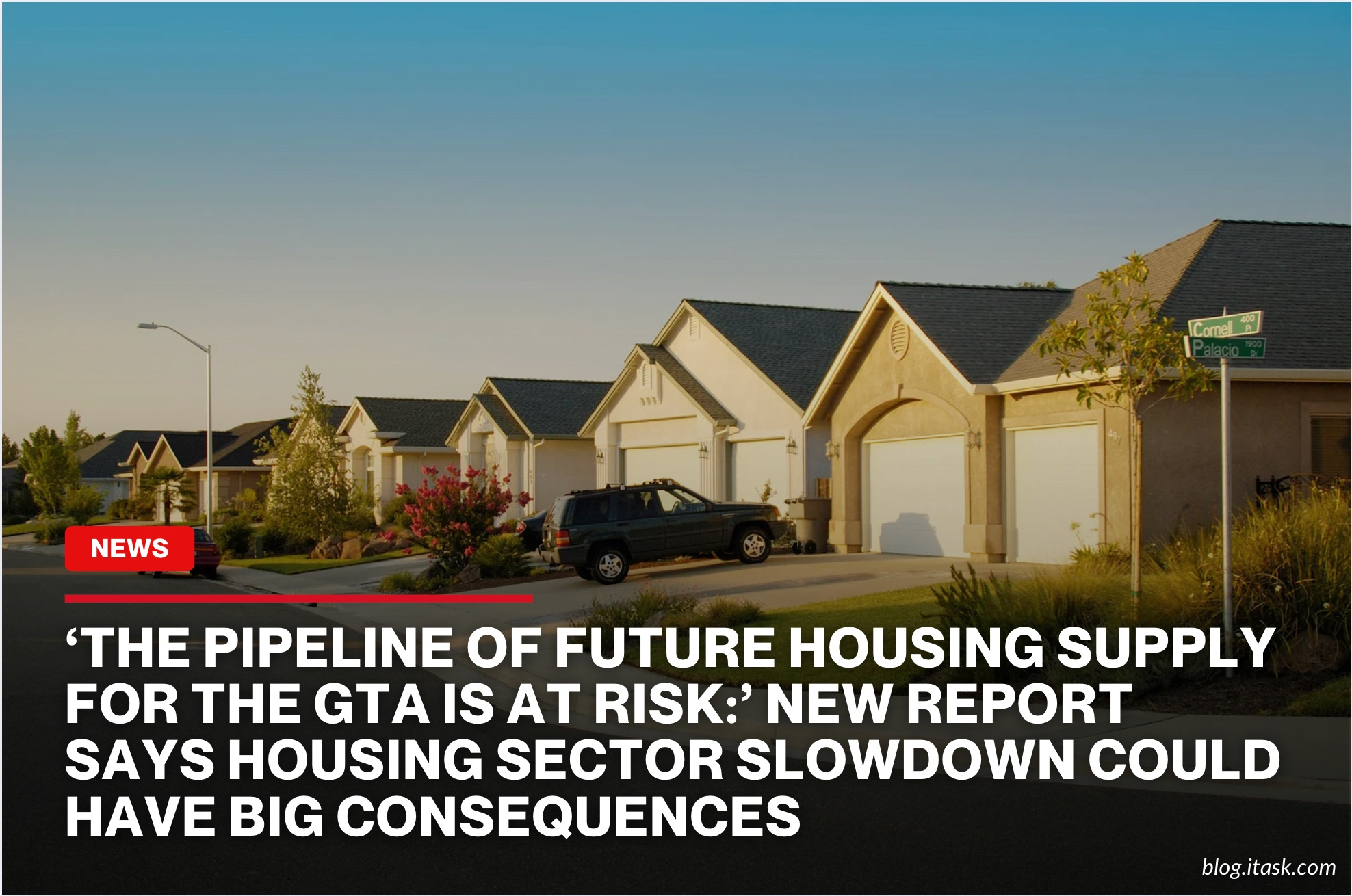‘The pipeline of future housing supply for the GTA is at risk:’ New report says housing sector slowdown could have big consequences
‘The pipeline of future housing supply for the GTA is at risk:’ New report says housing sector slowdown could have big consequences

New home sales in the Greater Toronto Area have fallen by more than half so far in 2025, according to a recent report. The analysis, done by Altus Group for the Building Industry and Land Development Association, makes clear that housing construction in Ontario is slowing down in a way that puts jobs and investment at risk.
If the current slowdown lasts, building starts and completions of single-family homes could fall to around 4,000 units by 2029, compared with over 12,000 units completed in 2022. Apartment construction could drop to about 10,000 units by 2029, down from a peak of more than 35,000 in 2023.
Put simply, the housing construction industry may stall when new homebuying stays low for a long period. That would hurt a sector that has been a trusted engine of jobs and economic activity in the region. Employment tied directly to housing construction may fall by nearly half, from current levels down to about 18,500 jobs, and another 22,500 indirect jobs could vanish, adding up to a loss of around 41,000 positions in total.
The money going into housing development will also take a big hit. Investment in single-family home construction could plunge from $6.7 billion in 2024 to about $1.9 billion in 2029. In apartment construction, the drop could be from $7.5 billion down to $2.6 billion in the same period.
Signs of the slowdown are already showing. In May 2025, employment in Toronto’s construction sector fell to its lowest level since spring 2021, during the height of COVID-19 restrictions. From its high in late 2023, the sector has lost some 34,600 jobs. In April, Ontario’s construction unemployment rate hit 10 per cent, the highest since the pandemic. Vacancy rates for construction jobs, previously around eight per cent in 2022, have dropped to 2.6 per cent, signaling a notable chill in the market not seen in years.
The head of BILD summed it up plainly: “The pipeline of future housing supply for the GTA is at risk, along with the livelihood of 41,000 workers in the region and billions of dollars of investments.” The warning is clear. If home sales do not pick up soon, the region could face a long, painful slide in construction, loss of jobs, and stalled housing supply.
